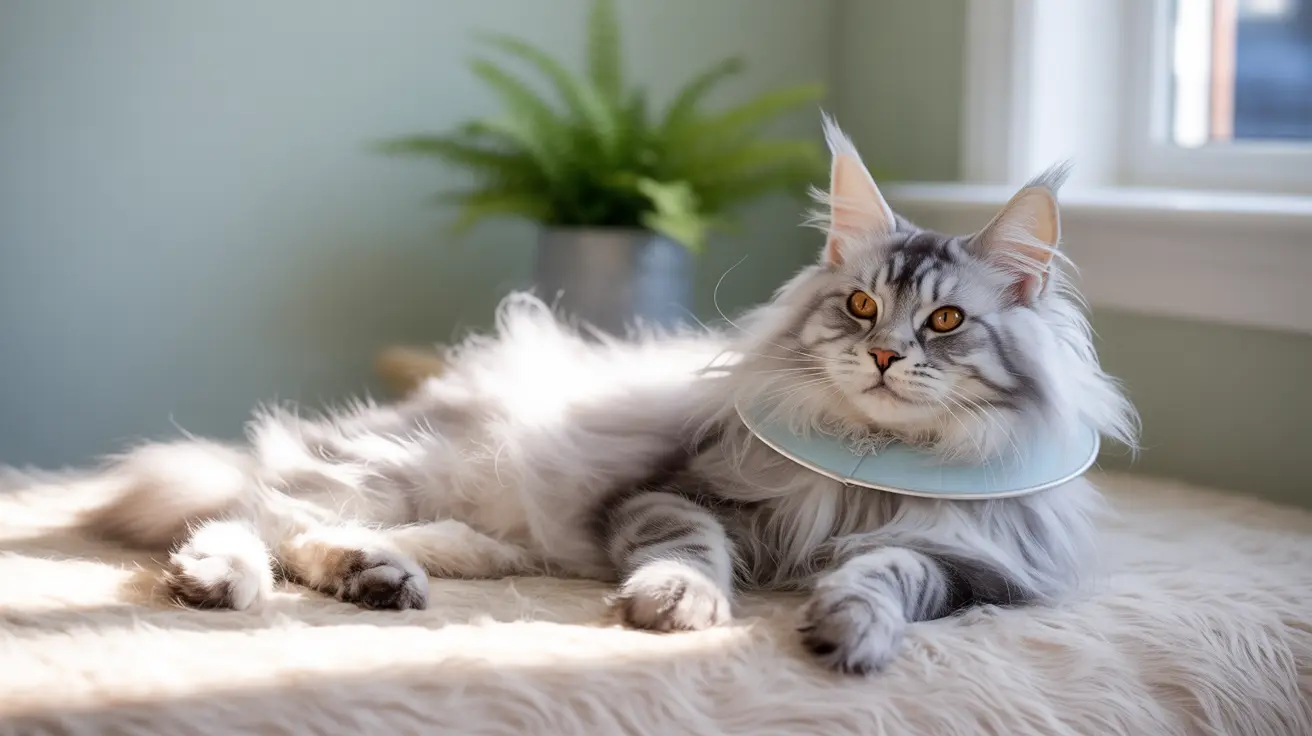Complete Guide to Cat Post-Surgery Care at Home: Essential Recovery Tips for Pet Owners
When your beloved feline companion undergoes surgery, the journey to full recovery largely depends on the quality of care they receive at home. Understanding proper cat post-surgery care at home is crucial for ensuring your pet heals safely and comfortably while minimizing the risk of complications. Whether your cat has undergone a routine spay or neuter procedure, dental surgery, or a more complex operation, the post-operative period requires dedicated attention and careful monitoring from pet owners.
The transition from veterinary clinic to home environment marks a critical phase in your cat's healing process. During this time, your role as a caregiver becomes paramount in supporting their recovery through proper wound management, medication administration, environmental modifications, and vigilant observation for potential complications. This comprehensive guide will equip you with the essential knowledge and practical strategies needed to provide exceptional cat post-surgery care at home, ensuring your feline friend returns to their normal, healthy self as quickly and safely as possible.
Preparing the Perfect Recovery Environment
Creating an optimal healing space is the foundation of successful cat post-surgery care at home. Your recovering cat needs a quiet, warm, and clean environment that promotes rest while minimizing stress and infection risks. Choose a draft-free room with a comfortable temperature between 68°F and 75°F (20°C–24°C), as maintaining proper body temperature is essential for healing.
Set up the recovery area on floor level to prevent jumping, which could strain surgical wounds. Provide soft, clean bedding that can be easily washed and replaced as needed. Consider using blankets, heating pads, or infrared lamps to maintain warmth, but ensure your cat can move away from heat sources if they become too warm. The recovery space should be separate from other pets to prevent stress, competition for resources, and potential infection transmission.
Keep your cat strictly indoors during the recovery period, as outdoor exposure increases risks of injury, infection, and complications. Remove or cover cat trees, high perches, and other climbing opportunities that might tempt your cat to jump. Maintain a calm, quiet atmosphere by minimizing household noise and limiting visitors during the initial recovery phase.
Essential Post-Surgery Monitoring and Wound Care
Diligent monitoring forms the cornerstone of effective cat post-surgery care at home. Check your cat's surgical incision twice daily, looking for proper healing signs and potential complications. A healthy incision should appear clean with edges together, showing only slight redness or minor bruising near the site, which is completely normal during initial healing.
Watch for concerning signs that require immediate veterinary attention, including excessive bleeding, continuous discharge beyond 24 hours, significant swelling, increasing redness, unpleasant odors, or any discharge with unusual color or consistency. The incision should remain dry, so avoid bathing your cat during the recovery period to prevent infection.
If your veterinarian has provided bandages, keep them clean and dry at all times. Cover bandages when your cat goes outdoors (if permitted) and change them according to your vet's instructions. Monitor your cat's urination and defecation patterns daily, as changes in elimination habits can indicate complications or discomfort that requires professional evaluation.
Managing Post-Operative Medications Safely
Proper medication administration is a critical component of cat post-surgery care at home. Take detailed notes during your veterinary visit, recording exact dosages, timing, and duration for each prescribed medication. Never give your cat human medications, as many common pain relievers and other drugs can be toxic or fatal to felines.
If your cat proves difficult to medicate, try mixing medications with small amounts of favorite foods (only if approved by your veterinarian), using pill pockets, or wrapping your cat gently but securely in a towel. Some cats respond better to liquid formulations, while others prefer crushed tablets mixed with food. Always complete the full course of antibiotics even if your cat appears to be healing well.
Monitor your cat for any adverse reactions to medications, including vomiting, diarrhea, loss of appetite, lethargy beyond normal post-surgical expectations, or unusual behavioral changes. Contact your veterinarian immediately if you notice any concerning symptoms or if you're unable to successfully administer prescribed medications.
Nutrition and Feeding Guidelines for Recovery
Proper nutrition plays a vital role in supporting your cat's healing process. Resume feeding a few hours after arriving home from surgery, but start with approximately half of your cat's usual meal portion. If your cat shows interest and tolerates the initial feeding well, offer the remainder about an hour later. This approach helps reduce nausea risks associated with anesthesia effects.
Provide fresh water immediately upon returning home unless specifically instructed otherwise by your veterinarian. Some cats may experience decreased appetite initially due to anesthesia effects, pain, or stress. Offer small, plain, high-protein meals such as boiled chicken or fish to encourage eating and support tissue repair.
If your cat refuses food for more than 24 hours, or shows signs of nausea, vomiting, or complete loss of appetite beyond the initial 24-48 hour period, contact your veterinarian promptly. Prolonged appetite loss can lead to serious complications, particularly in cats, and may indicate pain, infection, or other post-surgical issues requiring immediate attention.
Activity Restriction and Movement Management
Controlling your cat's activity level is essential for proper wound healing and preventing complications. Most cats require restricted movement for 7-14 days following surgery, depending on the procedure type. Soft tissue surgeries typically require 2-3 weeks of limited activity, while orthopedic procedures may necessitate 8-12 weeks or longer of restricted movement.
Prevent jumping and excessive movement by removing access to high surfaces, keeping outdoor cats strictly indoors, and separating your recovering cat from other pets that might encourage play or active behavior. If necessary, your veterinarian may prescribe crate rest, in which case ensure the crate is appropriately sized with comfortable bedding and easy access to food and water.
Monitor your cat closely during the restriction period, as unobserved jumping or running can cause serious injury to healing surgical sites. Encourage gentle indoor movement as tolerated, but intervene immediately if your cat attempts strenuous activities that could compromise their recovery.
Preventing Wound Interference with Protective Equipment
Using protective equipment effectively is crucial for preventing your cat from licking, chewing, or scratching at surgical sites. Elizabethan collars (E-collars) are the most common protective device, though recovery suits may be recommended for certain procedures. These tools prevent access to wounds while allowing your cat to eat, drink, and rest comfortably.
Keep protective equipment on at all times unless specifically instructed otherwise, even removing it temporarily only during supervised feeding if absolutely necessary. If your cat manages to remove stitches despite protective measures, contact your veterinarian immediately, as this can lead to wound reopening and serious complications.
Some cats may initially resist wearing protective collars, but most adapt within 24-48 hours. Ensure the collar fits properly—not too tight to cause discomfort, but snug enough to prevent removal. Monitor the neck area for any irritation and clean the collar regularly to maintain hygiene.
Recognizing Post-Surgery Complications and Emergency Signs
Understanding when to seek emergency veterinary care can be life-saving for your recovering cat. Normal post-surgical effects include sleepiness lasting 24-48 hours, mild cough from intubation (should diminish within days), and slight disorientation. However, several signs warrant immediate professional attention.
Contact your veterinarian immediately if you observe pale gums, ongoing vomiting beyond the first 24 hours, inability to urinate or defecate, severe swelling at the surgical site, colored discharge from wounds, continuous bleeding, or signs of severe pain such as excessive vocalization, aggression, or complete withdrawal from normal activities.
Behavioral changes that indicate complications include complete loss of appetite beyond 48 hours, inability to maintain normal body temperature, difficulty breathing, or any signs of infection such as fever, lethargy beyond normal post-surgical expectations, or foul-smelling discharge from surgical sites.
Supporting Emotional and Behavioral Recovery
Cats often experience psychological stress following surgery, which can impact their physical recovery. Provide emotional support by maintaining familiar routines where possible, speaking in calm, reassuring tones, and respecting your cat's need for space and rest. Avoid excessive handling or attention that might increase stress levels during the vulnerable recovery period.
Some cats may exhibit temporary behavioral changes such as increased hiding, decreased grooming, changes in vocalization patterns, or altered interaction with family members. These responses are typically normal but should gradually improve as your cat heals and feels more comfortable.
Create a stress-free environment by minimizing household disruptions, maintaining consistent feeding schedules, and providing familiar objects like favorite toys or blankets in the recovery area. If behavioral changes persist or worsen beyond the initial recovery phase, consult your veterinarian to rule out underlying complications or pain management issues.
Frequently Asked Questions
- How long should I restrict my cat's activity after surgery?
Activity restriction typically lasts 7-14 days for most procedures, though this varies by surgery type. Soft tissue surgeries usually require 2-3 weeks of limited movement, while orthopedic procedures may need 8-12 weeks or longer. Follow your veterinarian's specific instructions, as premature activity can cause wound reopening or other serious complications.
- What should I do if my cat won't eat after surgery?
Start with small portions of plain, high-protein foods like boiled chicken or fish. If your cat refuses food for more than 24-48 hours, contact your veterinarian immediately. Prolonged appetite loss in cats can lead to serious health complications and may indicate pain, infection, or other post-surgical issues requiring prompt medical attention.
- When should I be concerned about the surgical incision?
Contact your veterinarian immediately if you notice excessive bleeding, continuous discharge beyond 24 hours, significant swelling, increasing redness, unpleasant odors, or colored discharge from the wound. Normal healing shows slight redness and minor bruising, but the incision should appear clean with edges together.
- Can I remove the Elizabethan collar temporarily?
Keep the protective collar on at all times unless specifically instructed otherwise by your veterinarian. You may remove it briefly during supervised feeding if absolutely necessary, but replace it immediately afterward. If your cat removes stitches despite the collar, contact your vet right away.
- How do I know if my cat is in pain after surgery?
Signs of pain include behavioral changes such as aggression, excessive hiding, decreased grooming, unusual vocalization, complete loss of appetite, or extreme lethargy. Never give human pain medications to cats, as they can be toxic. Contact your veterinarian if you suspect your cat is experiencing significant discomfort.
- What temperature should I maintain in the recovery room?
Keep the recovery area at a comfortable temperature between 68°F and 75°F (20°C–24°C). Provide additional warmth through blankets, heating pads, or infrared lamps, but ensure your cat can move away from heat sources if they become too warm. Maintaining proper body temperature supports the healing process.
- When can my cat return to normal activities?
Normal activities typically resume after sutures are removed, usually 7-14 days post-surgery for most procedures. However, complex surgeries may require longer restriction periods. Your veterinarian will provide specific guidance based on your cat's healing progress and the type of surgery performed.
Conclusion
Providing excellent cat post-surgery care at home requires dedication, attention to detail, and a thorough understanding of your pet's needs during the vulnerable recovery period. By creating an appropriate healing environment, monitoring surgical sites diligently, administering medications properly, and restricting activity as directed, you play a crucial role in your cat's successful recovery. Remember that every cat heals at their own pace, and maintaining open communication with your veterinary team ensures any concerns are addressed promptly.
The investment you make in proper post-operative care directly impacts your cat's long-term health and well-being. Stay vigilant for signs of complications, follow all veterinary instructions carefully, and don't hesitate to seek professional guidance when questions arise. With proper care and attention, your feline companion will soon return to their normal, healthy, and active lifestyle, making the careful attention to their recovery period well worth the effort.






